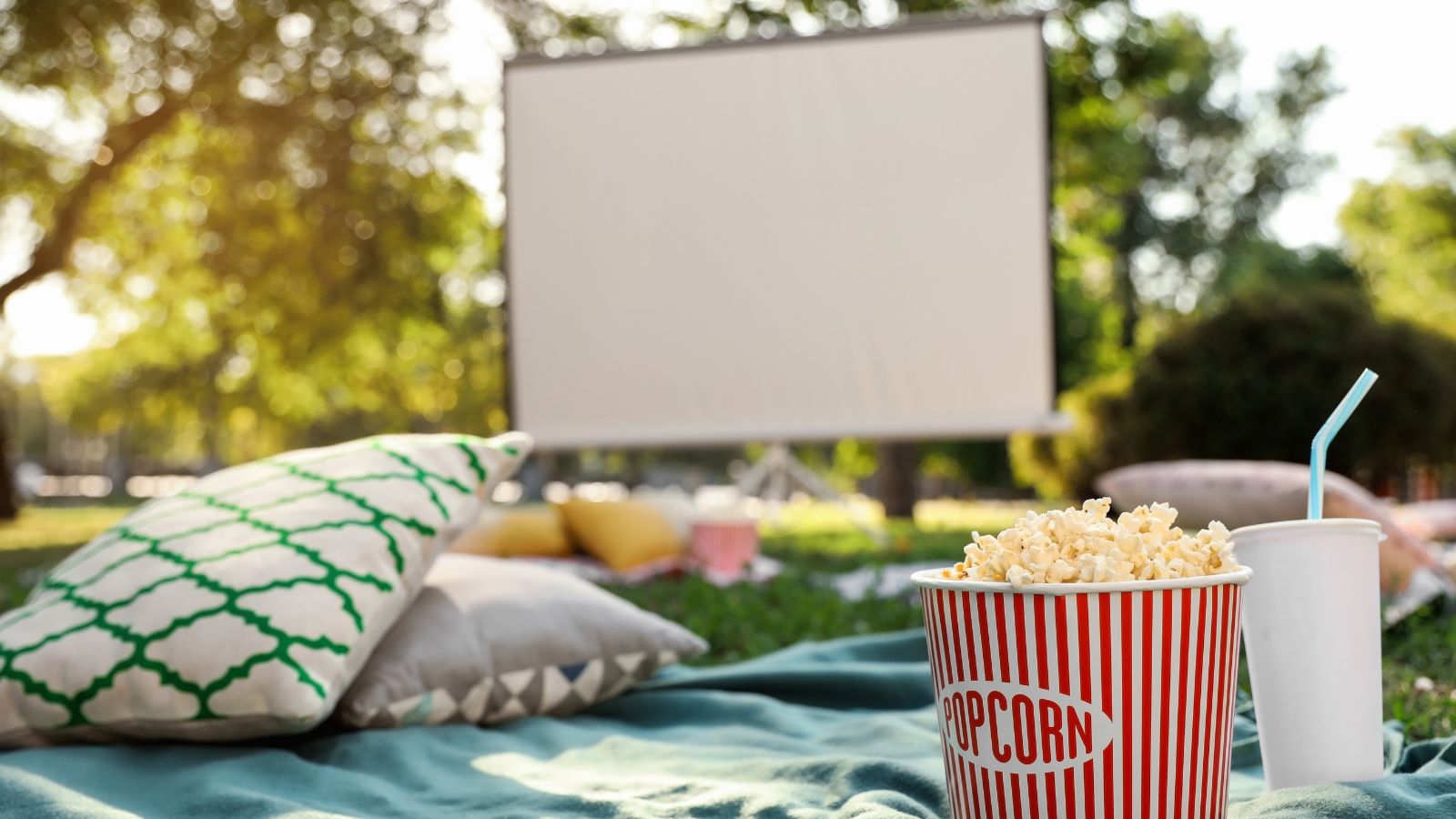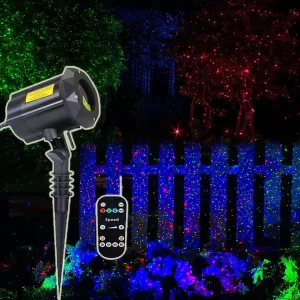Enjoying movies under the stars has become an increasingly popular pastime, blending the comfort of home entertainment with the magic of the great outdoors. Whether you’re planning a backyard movie night or setting up an outdoor cinema for a community event, choosing the right projector is crucial. In this guide, we delve into the technical considerations that should guide your outdoor movie projector purchase, ensuring you get the best viewing experience possible.
Brightness and Lumens
How Bright Should Your Projector Be?
One of the first specifications to look out for is the projector’s brightness, measured in lumens. For outdoor settings, where you can’t control ambient light as easily as indoors, a brighter projector is essential. Aim for a minimum of 2,500 lumens for evening screenings in dim conditions. However, if you plan to start your movie nights around twilight when there’s still light in the sky, considering projectors with upwards of 3,000 lumens is wise.
Impact of Brightness on Image Quality
Brightness influences not just visibility but also image quality. A projector that’s not sufficiently bright might result in washed-out images, especially in scenes with high contrast. This is even more crucial in outdoor settings, where competing sources of light, such as street lamps or moonlight, can affect the viewing experience. Opting for a brighter projector ensures that the colors and details of the movie are as clear and vivid as possible.
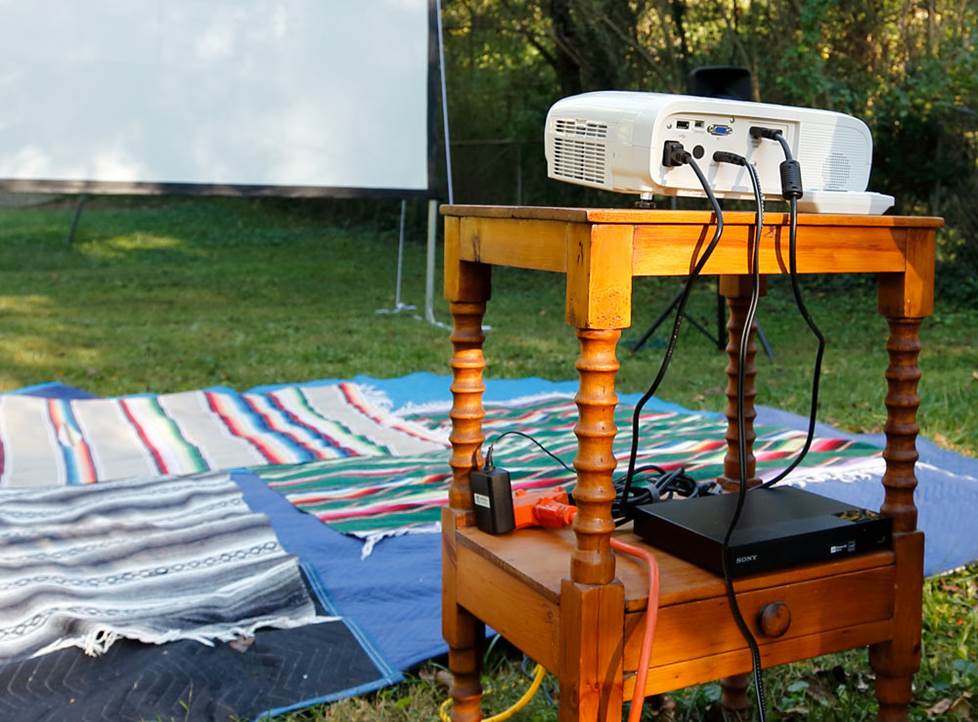
Resolution and Screen Size
Matching Resolution to Your Screen
The resolution of a projector determines the sharpness and detail of the image. For outdoor movie nights, Full HD (1920×1080) is a recommended minimum to ensure that the picture quality is crisp, even on larger screens. If your budget allows, 4K projectors offer even greater detail, making them a future-proof investment as 4K content becomes the standard.
Screen Size Considerations
The intended screen size is another key factor. Larger screens require projectors with higher resolution to maintain image quality. Before purchasing, consider the distance at which your audience will be seated and the size of your viewing area. This will help you choose a projector with the right throw ratio, which is the distance needed from the screen to produce a certain image size.

Connectivity Options
Ensuring Versatile Connectivity
In today’s digital age, a projector’s connectivity options are paramount. Most users prefer the convenience of wireless connectivity, like Wi-Fi or Bluetooth, for streaming content directly from their devices. HDMI ports are also essential for connecting to traditional sources such as DVD players or gaming consoles. Check for USB ports, which are useful for playing media directly from flash drives.
Audio Solutions for Outdoor Settings
An often-overlooked aspect of setting up an outdoor cinema is the sound. While some projectors have built-in speakers, their output is usually not powerful enough for outdoor use. Look for projectors with Bluetooth or audio-out options that allow you to connect external speakers or a sound system, ensuring your audio matches the quality of your visuals.
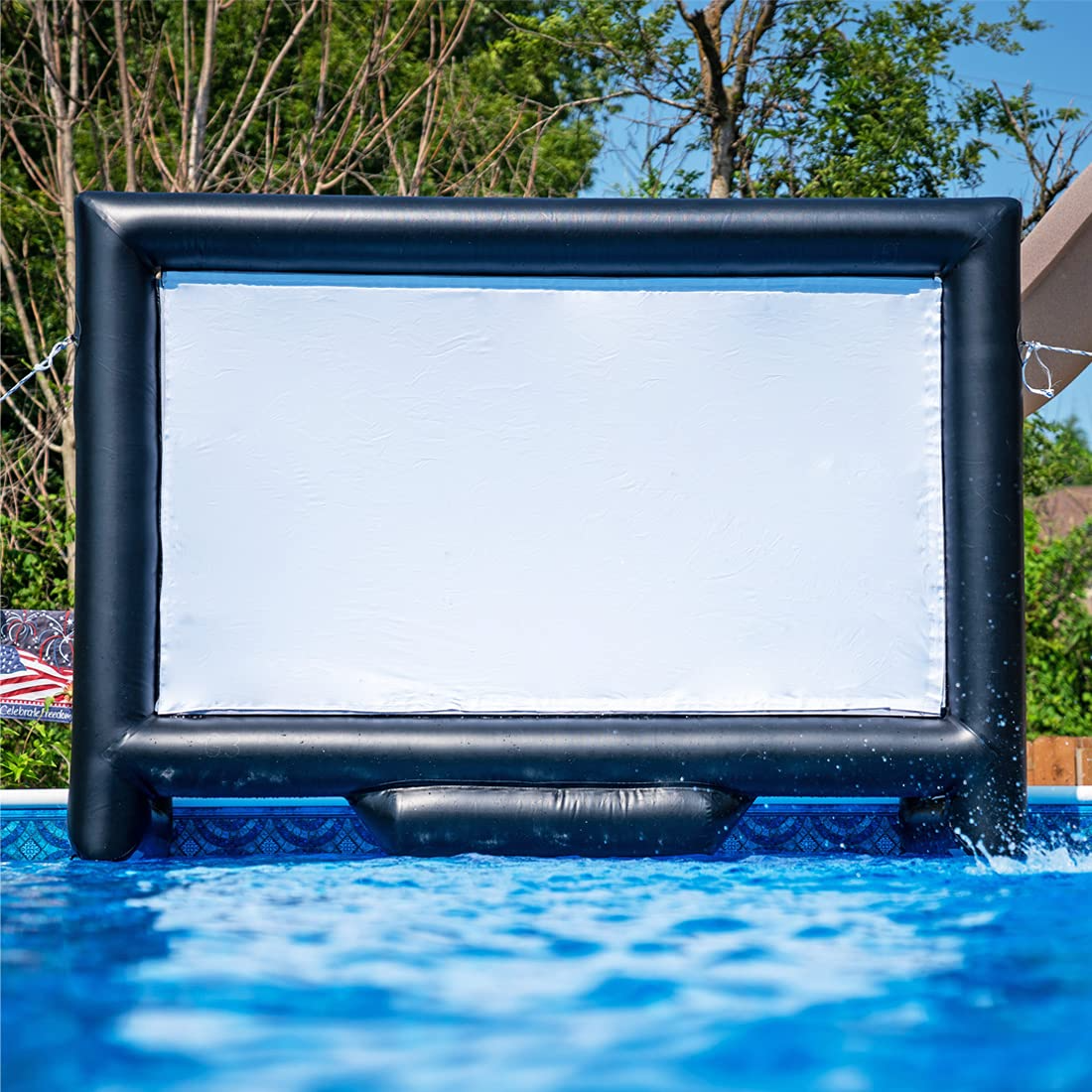
Durability and Portability
Weatherproof and Durable Designs
Outdoor projectors face different challenges than their indoor counterparts, from dew and humidity to unexpected rain showers. While not all projectors are fully weatherproof, models designed for outdoor use often feature more robust construction and protective measures against moisture. Considering a projector’s build and design can prevent the need for costly repairs or replacements.
Portability for Easy Setup
Portability is another consideration, especially if you plan to set up your outdoor movie space in different locations. Lightweight models with carrying cases or built-in handles offer convenience and flexibility. Easy setup and teardown are key to enjoying your outdoor cinema experience without hassle.
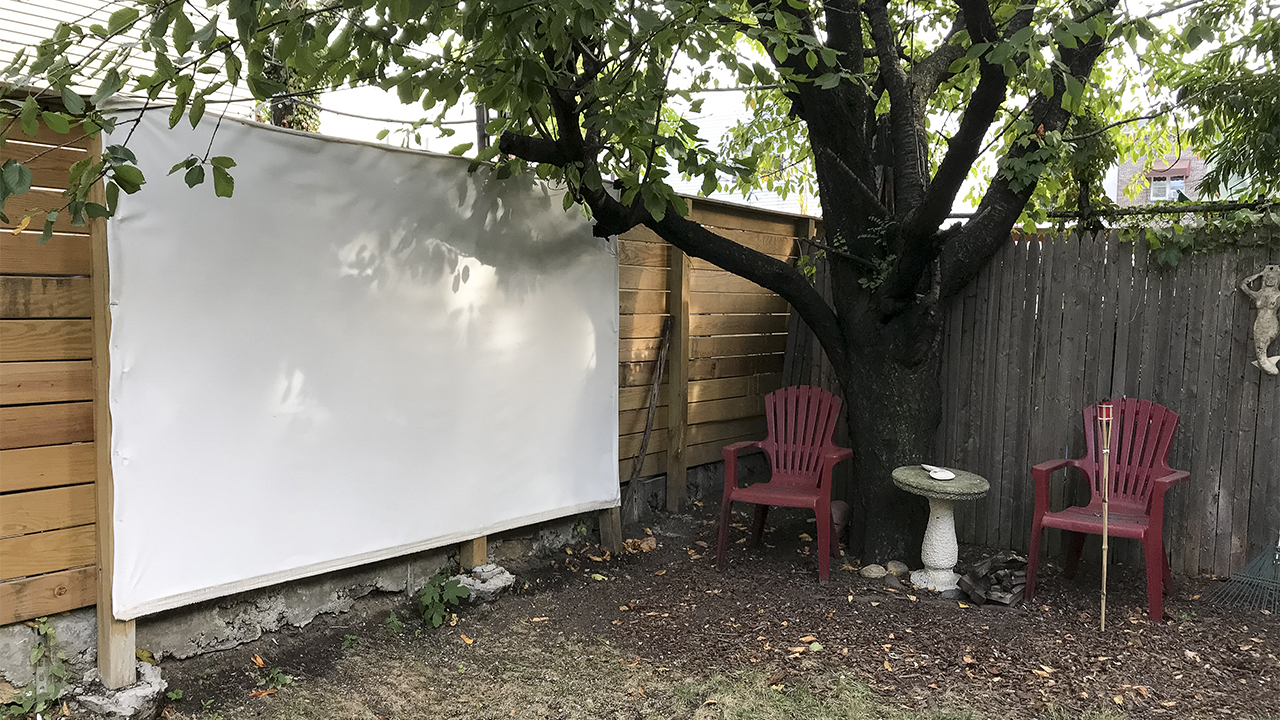
Environmental Adaptability
Adapting to Various Outdoor Settings
The versatility of your outdoor projector in different settings plays a significant role in its overall value. Beyond physical durability, consider how adaptable the projector is to varying levels of ambient light and surfaces. Some projectors feature settings that adjust the image based on the light in the environment, optimizing the viewing experience from sunset to nighttime. Additionally, projectors with a good keystone correction capability allow for image adjustment when projecting onto uneven surfaces, a common scenario in outdoor settings.
Importance of a Flexible Setup
For those who frequently move their setup or face unpredictable outdoor conditions, a projector with quick adjustment features is invaluable. This flexibility means less time setting up and more time enjoying your movie. Remember, the ease of adaptability can significantly enhance the user and viewer experience in dynamic outdoor environments.

Power Supply Considerations
Planning for Power in Outdoor Locations
Another critical aspect to mull over is how you’ll power your projector outdoors. Not all outdoor spaces have convenient power outlets, and using lengthy extension cords can be cumbersome and a safety hazard. Look for projectors with built-in rechargeable batteries that offer a decent runtime for at least one to two movies. Alternatively, consider a portable power station if you opt for a model without an internal battery. This strategy ensures your movie night goes uninterrupted, regardless of your location’s power setup.
Efficiency and Runtime
Projectors that boast energy-efficient designs can run longer on battery power, minimizing disruptions during your screening. When comparing models, assess the projector’s power consumption against its battery capacity to gauge how long it will operate on a single charge. Also, bear in mind the charging time, as this could impact your plans if the projector can’t hold a charge long enough for back-to-back movies or requires an extended period to recharge.
Audio-Visual Synchronization
Achieving Seamless Sync Between Audio and Image
In an outdoor setup, where you’re likely using external audio sources, ensuring the synchronization between audio and visuals is crucial. Delays in audio can detract significantly from the viewing experience. Look for projectors that support low-latency Bluetooth connectivity if you’re connecting to wireless speakers or soundbars. Some projectors also offer audio delay settings to fine-tune the sync manually, ensuring that the dialogue matches the actors’ lip movements and actions on screen perfectly.
The Role of Integrated Audio Solutions
While external speakers generally provide superior sound for outdoor settings, don’t overlook the convenience of built-in audio as a backup. A projector with a decent internal speaker system can be invaluable for impromptu viewings or in scenarios where carrying extra equipment is impractical. Opting for a projector that offers both excellent connectivity options for external audio and a competent built-in system gives you the best of both worlds: convenience and quality.
Enhancing Your Outdoor Cinema Experience
Choosing the right outdoor movie projector involves balancing several technical considerations, from brightness and resolution to connectivity and durability. By keeping these factors in mind, you can select a projector that not only meets your needs but also enhances your outdoor viewing experience. Whether it’s a family movie night in the backyard or a community gathering in the park, the right projector turns any outdoor space into a magical cinema under the stars.
